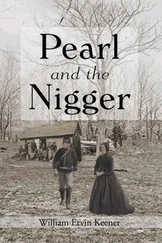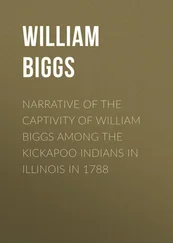William Sleeman - Rambles and Recollections of an Indian Official
Здесь есть возможность читать онлайн «William Sleeman - Rambles and Recollections of an Indian Official» — ознакомительный отрывок электронной книги совершенно бесплатно, а после прочтения отрывка купить полную версию. В некоторых случаях можно слушать аудио, скачать через торрент в формате fb2 и присутствует краткое содержание. Жанр: Путешествия и география, История, foreign_edu, foreign_antique, foreign_prose, на английском языке. Описание произведения, (предисловие) а так же отзывы посетителей доступны на портале библиотеки ЛибКат.
- Название:Rambles and Recollections of an Indian Official
- Автор:
- Жанр:
- Год:неизвестен
- ISBN:нет данных
- Рейтинг книги:4 / 5. Голосов: 1
-
Избранное:Добавить в избранное
- Отзывы:
-
Ваша оценка:
- 80
- 1
- 2
- 3
- 4
- 5
Rambles and Recollections of an Indian Official: краткое содержание, описание и аннотация
Предлагаем к чтению аннотацию, описание, краткое содержание или предисловие (зависит от того, что написал сам автор книги «Rambles and Recollections of an Indian Official»). Если вы не нашли необходимую информацию о книге — напишите в комментариях, мы постараемся отыскать её.
Rambles and Recollections of an Indian Official — читать онлайн ознакомительный отрывок
Ниже представлен текст книги, разбитый по страницам. Система сохранения места последней прочитанной страницы, позволяет с удобством читать онлайн бесплатно книгу «Rambles and Recollections of an Indian Official», без необходимости каждый раз заново искать на чём Вы остановились. Поставьте закладку, и сможете в любой момент перейти на страницу, на которой закончили чтение.
Интервал:
Закладка:
When Monsieur Thevenot was at Agra [in] 1666, the Christian population was roughly estimated at twenty-five thousand families. They had all passed away before it became one of our civil and military stations in the beginning of the present century, and we might search history in vain for any mention of them (see his Travels in India , Part III). One single prince, well disposed to give Christians encouragement and employment, might, in a few years, get the same number around his capital; and it is probable that the early Christians in India occasionally found such princes, and gave just cause of alarm to the Brahman priests, who were then in the infancy of their despotic power. 34 34 The existing settlements of native Christians at Agra are mostly of modern origin. Very ancient Christian communities exist near Madras, and on the Malabar coast. The travels of Jean de Thevenot were published in 1684, under the title of Voyage, contenant la Relation de l'Indostan . The English version, by A. Lovell (London, 1687), is entitled The Travels of Monsieur de Thevenot into the Levant, in three Parts . Part III deals with the East Indies, The passage referred to is: 'Some affirm that there are twenty-five thousand Christian Families in Agra, but all do not agree in that' (Part III, p. 35). Thevonot's statement about the Christians of Agra is further discussed post in Chapter 52.
During the war with Nepal, in 1814 and 1815, 35 35 The war with Nepal began in October, 1814, and was not concluded till 1816. During its progress the British arms suffered several reverses.
the division with which I served came upon an extremely interesting colony of about two thousand Christian families at Betiyā in the Tirhūt District, on the borders of the Tarāi forest. This colony had been created by one man, the Bishop, a Venetian by birth, under the protection of a small Hindoo prince, the Rājā, of Betiyā. 36 36 The Betiyā (Bettiah of I. G ., 1908) Rāj is a great estate with an area of 1,824 square miles in the northern part of the Champāran District of Bihār, in the Province of Bihār and Orissa. A great portion of the estate is held (1908) on permanent leases by European indigo-planters.
This holy man had been some fifty years among these people, with little or no support from Europe or from any other quarter. The only aid he got from the Rājā was a pledge that no member of his Church should be subject to the Purveyance system , under which the people everywhere suffered so much, 37 37 For discussion of this system see post, Chapter 7.
and this pledge the Rājā, though a Hindoo, had never suffered to be violated. There were men of all trades among them, and they formed one very large street remarkable for the superior style of its buildings and the sober industry of its inhabitants. The masons, carpenters, and blacksmiths of this little colony were working in our camp every day, while we remained in the vicinity, and better workmen I have never seen in India; but they would all insist upon going to divine service at the prescribed hours. They had built a splendid pucka 38 38 'Pucka' (pakkā ) here means 'masonry', as opposed to 'Kutcha' ( kachchā ), meaning 'earthen'.
dwelling-house for their bishop, and a still more splendid church, and formed for him the finest garden I have seen in India, surrounded with a good wall, and provided with admirable pucka wells. The native Christian servants who attended at the old bishop's table, taught by himself, spoke Latin to him; but he was become very feeble, and spoke himself a mixture of Latin, Italian, his native tongue, and Hindustānī. We used to have him at our messes, and take as much care of him as of an infant, for he was become almost as frail as one. The joy and the excitement of being once more among Europeans, and treated by them with so much reverence in the midst of his flock, were perhaps too much for him, for he sickened and died soon after.
The Rājā died soon after him, and in all probability the flock has disappeared. No Europeans except a few indigo planters of the neighbourhood had ever before known or heard of this colony; and they seemed to consider them only as a set of great scoundrels, who had better carts and bullocks than anybody else in the country, which they refused to let out at the same rate as the others, and which they (the indigo lords) were not permitted to seize and employ at discretion. Roman Catholics have a greater facility in making converts in India than Protestants, from having so much more in their form of worship to win the affections through the medium of the imagination. 39 39 Native Christians, according to the census of 1872, number 1,214 persons, who are principally found in Bettiā thāna [police-circle]. There are two Missions, one at Bettiā, and the other at the village of Chuhārī, both supported by the Roman Catholic Church. The former was founded in 1746 by a certain Father Joseph, from Garingano in Italy, who went to Bettiā on the invitation of the Mahārāja. The present number of converts is about 1,000 persons. Being principally descendants of Brahmans, they hold a fair social position; but some of them are extremely poor. About one-fourth are carpenters, one- tenth blacksmiths, one-tenth servants, the remainder carters. The Chuhārī Mission was founded in 1770 by three Catholic priests, who had been expelled from Nepal [after the Gōrkha conquest in 1768]. There are now 283 converts, mostly descendants of Nepālis. They are all agriculturists, and very poor (Article 'Champāran District' in Statistical Account of Bengal , 1877). The statement in I.G. 1908, s.v. Bettiah, differs slightly, as follows: 'A Roman Catholic Mission was established about 1740 by Father Joseph Mary, an Italian missionary of the Capuchin Order, who was passing near Bettiah on his way to Nepāl, when he was summoned by Rājā Dhruva Shah to attend his daughter, who was dangerously ill. He succeeded in curing her, and the grateful Raja invited him to stay at Bettiah and gave him a house and ninety acres of land.' The Bettiah Mission still exists and maintains the Catholic Mission Press, where publications illustrating the history of the Capuchin Missions have been printed. Father Felix, O.C., is at work on the subject.
CHAPTER 3
The legend is that the Nerbudda, which flows west into the Gulf of Cambay, was wooed and won in the usual way by the Sōn river, which rises from the same tableland of Amarkantak, and flows east into the Ganges and Bay of Bengal. 40 40 Amarkantak, formerly in the Sohāgpur pargana of the Bilāspur District of the Central Provinces, is situated on a high tableland, and is a famous place of pilgrimage. The temples are described by Beglar in A.S.R. , vol. vii, pp. 227-34, pl. xx, xxi. The hill has been transferred to the Rīwā State ( Central Provinces Gazetteer (1870), and I.G. (1908), s.v. Amarkantak).
All the previous ceremonies having been performed, the Sōn 41 41 The name is misspelled Sohan in the author's text. The Sōn rises at Sōn Mundā, about twenty miles from Amarkantak (A.S.R. , vol. vii, 236).
came with 'due pomp and circumstance' to fetch his bride in the procession called the 'Barāt', up to which time the bride and bridegroom are supposed never to have seen each other, unless perchance they have met in infancy. Her Majesty the Nerbudda became exceedingly impatient to know what sort of a personage her destinies were to be linked to, while his Majesty the Sōn advanced at a slow and stately pace. At last the Queen sent Johilā, the daughter of the barber, to take a close view of him, and to return and make a faithful and particular report of his person. His Majesty was captivated with the little Johilā, the barber's daughter, at first sight; and she, 'nothing loath', yielded to his caresses. Some say that she actually pretended to be Queen herself; and that his Majesty was no further in fault than in mistaking the humble handmaid for her noble mistress; but, be that as it may, her Majesty no sooner heard of the good understanding between them, than she rushed forward, and with one foot sent the Sōn rolling back to the east whence he came, and with the other kicked little Johilā sprawling after him; for, said the high priest, who told us the story, 'You see what a towering passion she was likely to have been in under such indignities from the furious manner in which she cuts her way through the marble rocks beneath us, and casts huge masses right and left as she goes along, as if they were really so many coco-nuts'. 'And was she', asked I, 'to have flown eastward with him, or was he to have flown westward with her?' 'She was to have accompanied him eastward', said the high priest, 'but her Majesty, after this indignity, declared that she would not go a single pace in the same direction with such wretches, and would flow west, though all the other rivers in India might flow east; and west she flows accordingly, a virgin queen.' I asked some of the Hindoos about us why they called her 'Mother Nerbudda', if she was really never married. 'Her Majesty', said they with great respect, 'would really never consent to be married after the indignity she suffered from her affianced bridegroom the Sōn; and we call her Mother because she blesses us all, and we are anxious to accost her by the name which we consider to be at once the most respectful and endearing.'
Интервал:
Закладка:
Похожие книги на «Rambles and Recollections of an Indian Official»
Представляем Вашему вниманию похожие книги на «Rambles and Recollections of an Indian Official» списком для выбора. Мы отобрали схожую по названию и смыслу литературу в надежде предоставить читателям больше вариантов отыскать новые, интересные, ещё непрочитанные произведения.
Обсуждение, отзывы о книге «Rambles and Recollections of an Indian Official» и просто собственные мнения читателей. Оставьте ваши комментарии, напишите, что Вы думаете о произведении, его смысле или главных героях. Укажите что конкретно понравилось, а что нет, и почему Вы так считаете.












